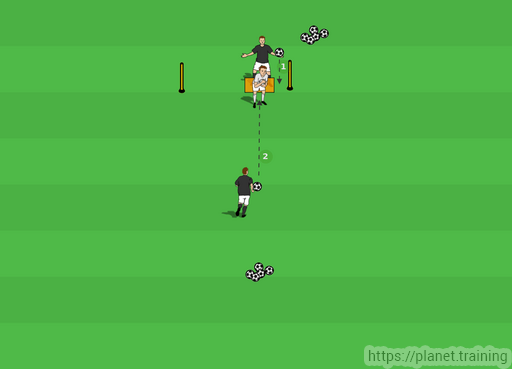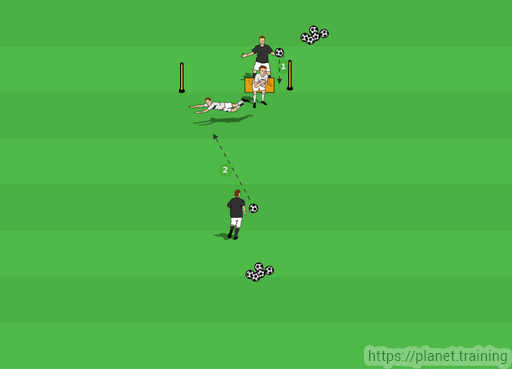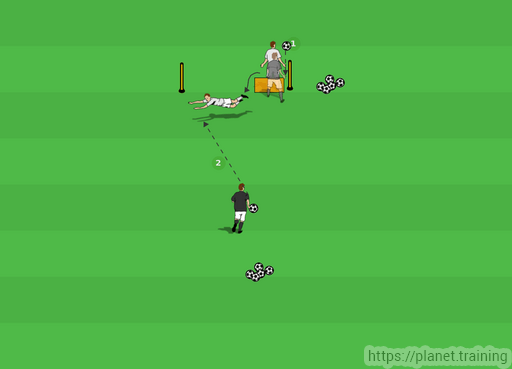By Scott Housden -
Being able to deal with the unpredictable including reaction saves is a vital component in goalkeeping. In order to be effective in these situations it is paramount that the goalkeeper remember and use the basic factors of goalkeeping, including; having relaxed shoulders in your balanced ‘set’ position, the size of your steps when moving across the goal and the ability to focus on second phase play quickly & efficiently.
Set Up
• Working size of the goal is ½ of a full size goal
• The goalkeeper starts by sitting on a stool/chair or plyometric box facing the second server with their hands in the ‘set’ position.
• The first server (standing behind the goalkeeper) drops a ball from head height towards the lap of the seated goalkeeper, with the goalkeeper using either hand to knock the ball away before it hits their lap.
• The goalkeeper then has to refocus on a volley (or thrown delivery) straight to them (chest height) from server 2.

Coaching Points
• Keep your shoulders relaxed at all times in your ‘set’ position. This will enable quicker hand movements.
• Quick refocus on the second ball from server 2 is essential
• Aim to catch the ball cleanly from server 2.
• 4 – 6 serves each side
Progression 1
The goalkeeper repeats the first phase of the drill (i.e. sat down on box & parries away dropped ball fromserver 1). However, the second server now places a low shot towards the far pole for the goalkeeper to make a diving save.

Coaching Points
• Relaxed shoulders in ‘set’ position allow for quicker reactions for the first phase of the save.
• For the second phase, the goalkeeper must keep low (but balanced with their ‘nose over their toes’ when pushing off the box/chair using small fast steps.
• Leading with your hands when diving will enable to goalkeeper to utilise their ‘upper body drive’ as well as ‘lower body drive’ in gaining the distance to make the diving save (as well as using 2 hands to make the save – making a stronger save)
• If the ball is parried the goalkeeper must recover quickly for possible further reaction saves.
4 – 6 serves each side.
Progression 3
This progression starts with the goalkeeper starting the first phase of the drill facing away from the second server. This means that before the goalkeeper can make a second save they must turn to face the server 2 after parrying the ball dropped by server 1.
Additionally, server 2 can shoot anywhere within the goal.

Coaching Points
• After parrying the initial ball, the goalkeeper must then refocus on the second ball bay turning their head quickly so they are able to focus on the second shot as soon as possible.
By Scott Housden
Scott is both a UEFA ‘B’ and UEFA ‘B’ Goalkeeping Coach and holds a Masters in Sports Management. He has been a goalkeeper coach in professional football in the UK and Australia at First Team, Academy and Women’s levels. He currently runs a Goalkeeper Academy in the Western Suburbs of Brisbane, Australia.


